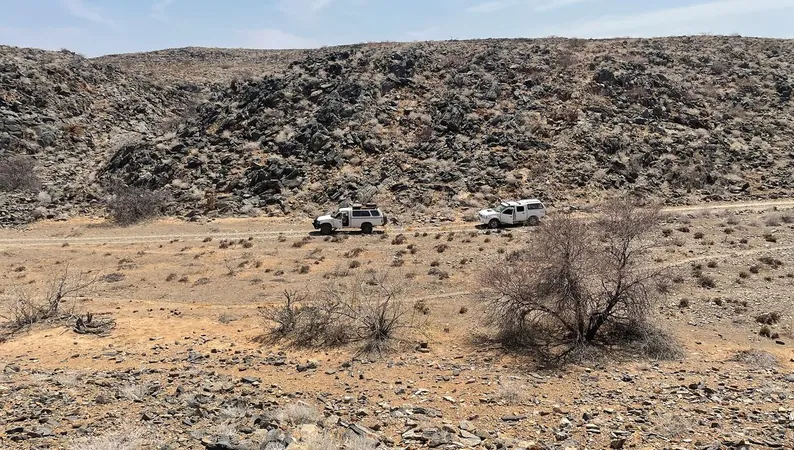
Remarkable Ancient Microtunnels Discovered in the Namibian Desert: Are They Evidence of Unknown Life?
2025-03-22
Author: Ting
In an astonishing revelation, researchers have uncovered ancient micro-burrows in the rocky landscape of Namibia, dating back over a million years. These tube-like structures, measuring approximately half a millimeter in diameter and extending up to 3 centimeters in length, challenge our current understanding of prehistoric life in extreme environments.
The initial discovery was made about 15 years ago by Professor Cees Passchier from Johannes Gutenberg University Mainz, who stumbled upon these peculiar formations during geological research in southern Africa. After finding similar structures in marble deposits in Saudi Arabia and limestone in Oman, the study of these micro-burrows gained momentum.
Investigations led by Passchier and his team revealed evidence of biological material within and surrounding the micro-burrows, indicating that these tunnels were not mere geological formations. “We were taken aback because the structures clearly result from biological activity rather than geological processes,” Passchier explained.
Microbes that create habitats within rock, known as endoliths (from the Greek for “inside rock”), thrive in extreme conditions, extracting energy and nutrients from their rocky surroundings. Such microorganisms have been documented in various harsh environments, including Antarctica's dry valleys and the arid deserts of California and Israel.
Inside the Namibian micro-burrows, researchers detected powdery calcium carbonate, a primary component of marble, suggesting that these microorganisms may have excavated into the rock to source vital nutrients while leaving this residue behind. Despite this finding, the exact identity of the organisms responsible remains a mystery. Researchers have yet to determine if they are bacteria, fungi, lichen, or an entirely new form of life. The specimens are too ancient, possibly up to 2 million years old, to yield any detectable DNA or proteins.
“What makes our discovery so thrilling is the uncertainty surrounding the identity of these endolithic microorganisms. Are we dealing with an extinct species, or is it still thriving somewhere?” pondered Passchier. He also noted that these structures likely formed in a more humid climate before the onset of today's arid desert conditions.
The implications of this discovery reach beyond mere academic curiosity; it could significantly impact our understanding of the global carbon cycle. These ancient life forms may have played an unrecognized role in the breakdown of carbonate minerals, thus influencing carbon storage and release within Earth’s ecosystems.
“This potential life form—whose existence remains unconfirmed—could hold critical evidence for our understanding of global carbon dynamics. It is imperative that the scientific community takes note of this research,” concluded Passchier.
As researchers continue to investigate these ancient microtunnels, the anticipation builds around discovering the identity of these long-lost life forms and their possible effects on our planet's environmental processes. What secrets might these ancient burrows still hold, and are we on the verge of uncovering a pivotal piece of Earth’s biological history? Stay tuned as this exciting story unfolds!




 Brasil (PT)
Brasil (PT)
 Canada (EN)
Canada (EN)
 Chile (ES)
Chile (ES)
 Česko (CS)
Česko (CS)
 대한민국 (KO)
대한민국 (KO)
 España (ES)
España (ES)
 France (FR)
France (FR)
 Hong Kong (EN)
Hong Kong (EN)
 Italia (IT)
Italia (IT)
 日本 (JA)
日本 (JA)
 Magyarország (HU)
Magyarország (HU)
 Norge (NO)
Norge (NO)
 Polska (PL)
Polska (PL)
 Schweiz (DE)
Schweiz (DE)
 Singapore (EN)
Singapore (EN)
 Sverige (SV)
Sverige (SV)
 Suomi (FI)
Suomi (FI)
 Türkiye (TR)
Türkiye (TR)
 الإمارات العربية المتحدة (AR)
الإمارات العربية المتحدة (AR)